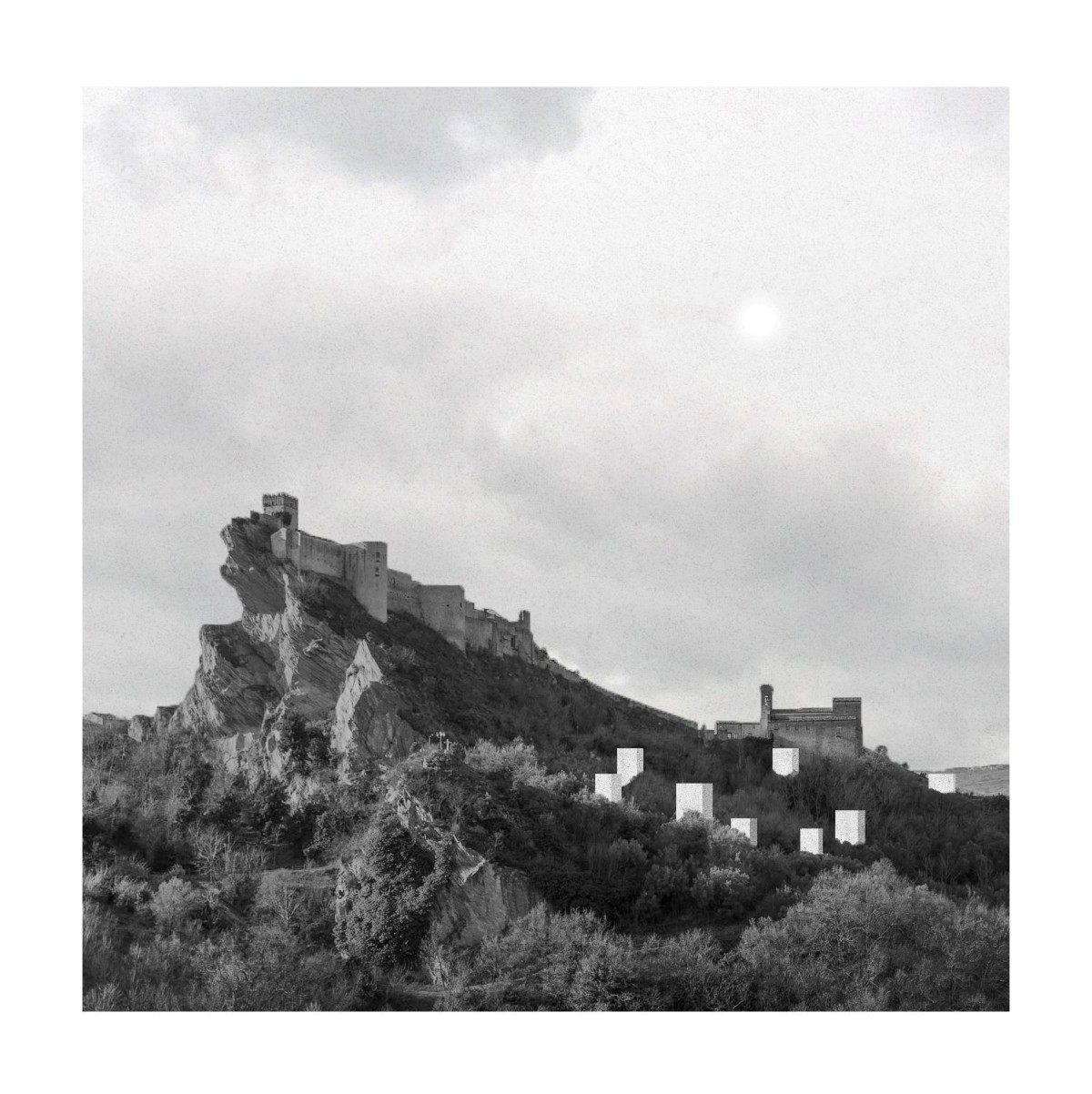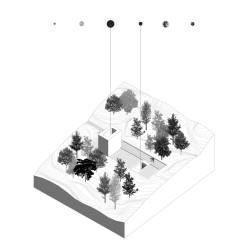studio PARE
Since the early Neolithic period around 8000 BC humans have recorded their connection to the cosmos. The relationship can be seen in primitive megalithic rock formations which lie strewn across Europe often aligned to celebrate significant events of cosmological activity. The most common typology of marker is the monolith – a huge vertical mass erected within an alien context for ritual use. These elements remain relevant today through contemporary science fiction literature and film – most notably Kubrick’s 2001 a space odyssey in which the monolith is re-imagined as an extra terrestrial marker left on earth. The monolith can thus be imagined as an icon which for millenia has symbolised a connection between man and space, the earth and the sky.
_
MONOLITH
The proposal calls for the required accommodation to be split into separate parts and scattered across the Roccascalgna hillside. All the requested programmatic elements will be buried into the ground with a singular vertical volume protruding above the tree line. This mass is the symbolic monolith acting not as an extension of the contextual landscape but rather an alien object perfectly regular in its form. The purity of the volume and lack of recognisable ornamentation is designed to appear unhuman. Each of the standing volumes will vary in size but will share an identical language so as to appear part of a defined network embedded within the wooded hills below the castle and church.
The act of burying the programme ensures that almost no light will be emitted from the monoliths and thus the objects will not disturb the site’s primary focal points, namely the sky and the castle. The new constructions will enforce the existing hierarchy of the area by merging invisibly into the hillside during the night, by day the volumes will pierce the forest canopy as exceptions to the natural order of the area.
Buried within each of the monoliths is a chamber dedicated to the ritual of cosmological worship. A rectangular oculus punctures the upper surface of the volume providing a window to the sky which continuously changes as the earth rotates. The oculus limits the infinite celestial spectrum to a singular defined frame heightening visitor’s attention.
In addition to the primary rectangular oculus each monolith will also be punctured with a secondary moon oculus opening. The window will frame the moon in its course once per year for a matter of minutes. The experience of awaiting the moons arrival at a selected moment in time is inspired by neolithic ritual in which communities would celebrate the arrival of certain stars or equinox and solstice events.
The remaining internal accommodation (bedrooms / kitchens etc.) are lit only from above with the light filtered through translucent glass to create an even distribution of ambient illumination with soft shadows. The effect is designed to create an unfamiliar domestic environment devoid of lateral windows and is inspired by the interior scenes of science fiction movies set within space stations.
Each monolith is designed to be divided from its attached accommodation allowing the oculus room spaces to be opened to the general public on specific days throughout the year. In this way the project which is primarily aimed at the luxury end of the hospitality market can be accessible to all enthusiasts of cosmological observation.















